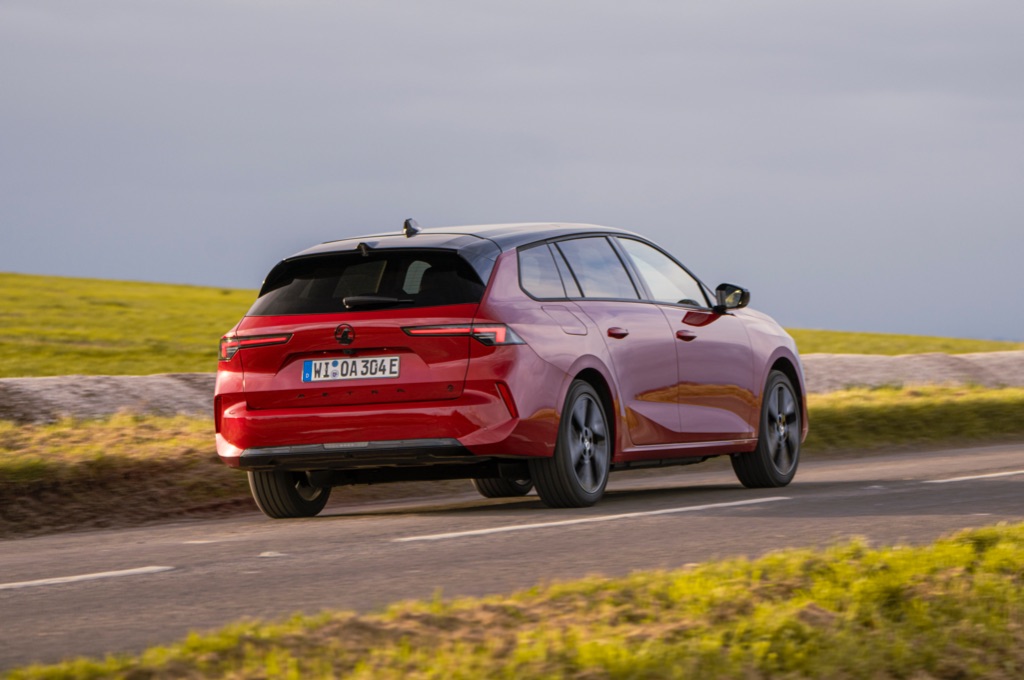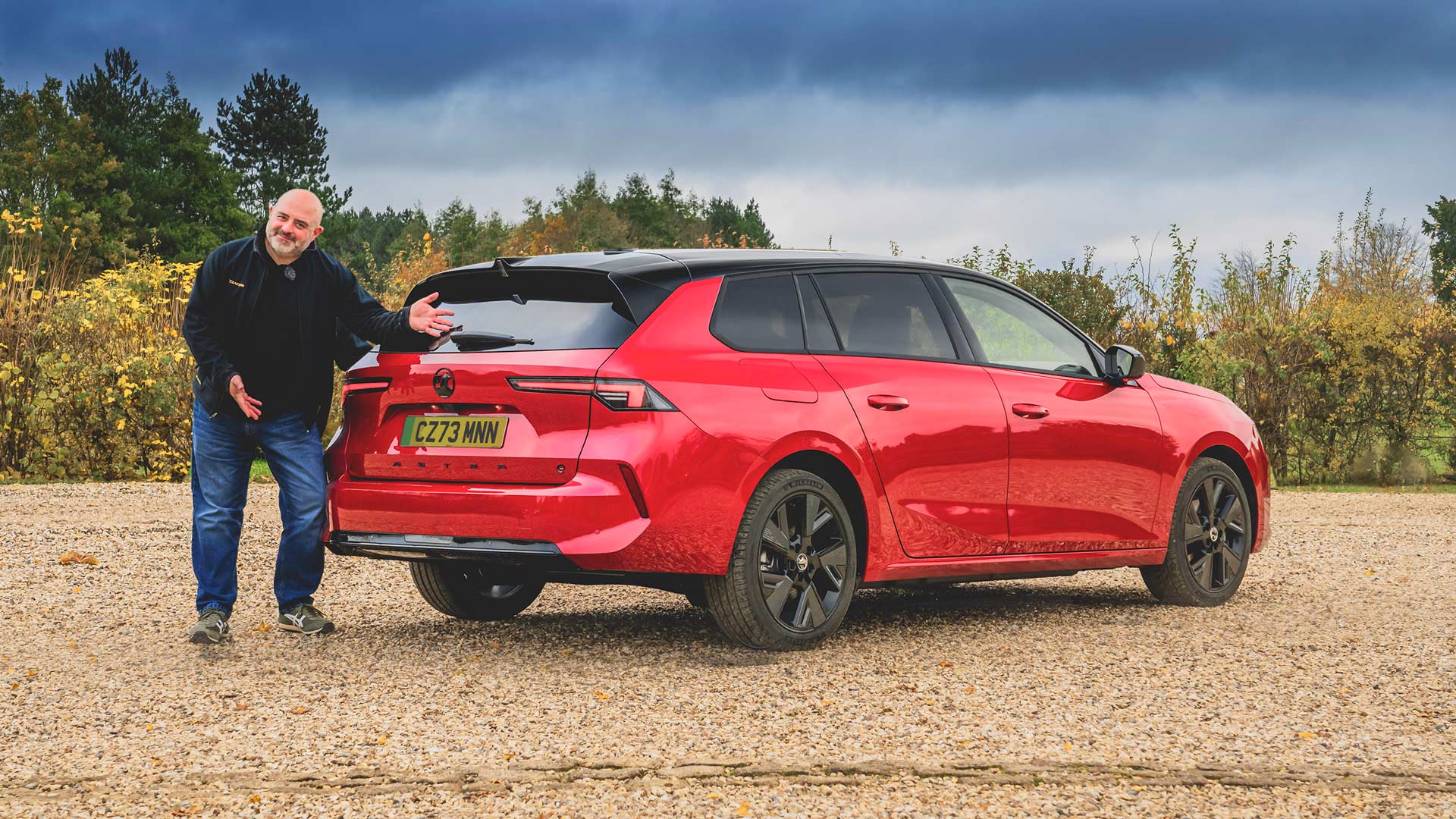The Astra Sport Tourer is a bit of a rarity at the moment – the only other electric estates are the MG5 and the Porsche Taycan. The MG has been a bit of a success story, especially among company car drivers who need to carry stuff around. I suspect most of these Astras will go the same way as the tax incentives make electric much more attractive for company car drivers.
Dimensions, design and practicality
The Astra might not have the biggest interior for passengers - especially in the back - but the driver gets a treat. The seat is super-comfy, and has been certified by the German Campaign For Healthier Backs no less. Our larger-proportioned testers found them perfect, while the more slight drivers on the team found them too hard.
Most of the expected tech is there. Two 10-inch displays make up Vauxhall’s Pure Panel screens and there's a head-up display on the more expensive version. You get voice recognition, loads of driver assistance systems and the usual app to control charging and pre-conditioning the car on particularly hot or cold days too.
There's also wireless charging, front and back parking sensors, voice-activated sat-nav… it’s pretty well-equipped, especially in the Ultimate grade. Only when it comes to navigation does the Astra feel like a let-down. Although the system knows how long the battery lasts and warns you to stop to charge on long journeys, the driver has to use an app to see where to plug in. The competitors are more sophisticated.
The 516 litre boot means there is plenty of space for the carpet samples or bits of photocopier you need to carry between appointments. That’s more than you’d get in something like a Nissan Qashqai, for example.That increases to 1,553 litres when the seats are folded, and the load space is just about big enough to accommodate you when you get thrown out for forgetting your wedding anniversary.
Unlike the MG, you are also left with a load bay which is almost flat, especially if you squish the foam down a bit with something heavy.
All models come as standard with special aerodynamic 18-inch alloy wheels with a specific eco tyre size (215/45R18 A+), contributing to the Astra's Electric’s efficiency.
Driving
We’ve already had a go in the hatchback version of the Astra Electric and were sort of impressed. I say sort of, because we liked the way it drives and were very impressed with the efficiency. Those attributes have been carried over to the estate. It might even be a bit better.
First of all, there’s the way it drives. Being closer to the road means it naturally feels a bit more sporty than an SUV. You don’t get the sort of big swaying movements when you go around corners or over bumps.
Vauxhall has also done something clever in the electric version of this car, by using the battery as a part of the structure of the bodyshell, which makes it stiffer than the petrol and hybrid versions. Those more solid foundations mean the car handles better.
Like the hatch, the Sport Tourer has one motor that drives the front wheels and it gets just 154bhp. That’s quite a lot less than most of the rivals, and the lack of punch is felt even more if you’re not in ‘Sport’ mode.
That results in a 0-62mph time of 9.3 seconds, which is quite sedate for an electric car. Most of the rivals are in the seven seconds region. Like all electric cars it has a reasonable punch from a standstill and at lower speeds, but the Astra runs out of puff when trying to climb a long, steep hill at motorway speeds.
Battery, range and charging
As for efficiency, this Astra has a claimed official range figure of 256 miles just two less than the lighter, smaller hatch. That’s not a particularly impressive total, but it manages that from a 54kWh battery. Which means this big old car uses about the same amount of power to move it around as a supermini.
It should mean that you spend less time – and money – charging compared to the SUV competitors which have bigger batteries. It would be nice to have a bit more range though – especially if you need to do a lot of miles every day, which is what you’d expect from business drivers.
The Astra is certainly nicer to drive than the MG5 - it feels like a more modern, solid car. But it should do – as it is more expensive.
Pricing and availability
Now that list price might become less crucial when it is all fed into the spreadsheets of the leasing companies, but even if the company is paying the bills it will mean you are taxed about an extra £100 a year.
Which means inevitably you’ll start looking at alternatives on the car list. Recent price tweaks have made the Astra look much more tempting - the cheapest model is now £36,145 and the most expensive is £40,695 - irritatingly over the £40,000 luxury car tax barrier.
Verdict
The pricing means the Astra Sport Tourer looks a bit lost. It does everything you’d expect and it does it well. It’s a likeable car. Nice to drive and comfortable. Spacious enough to sleep in when you’ve argued with the wife. And efficient in the real world.
But it’s not achingly desirable. I wouldn’t go and beg the fleet manager to let me have one or consider paying extra out of your own pay packet to get on your drive. Which means it needs to compete on value, and this simply doesn’t. There’s a long list of cars which do most things better – and they’re cheaper.
It’s a shame. I think Vauxhall could make this a car a real alternative to SUVs. But, unless you spot a good deal to get one on finance or at a big discount, it’s punching above its weight.




























